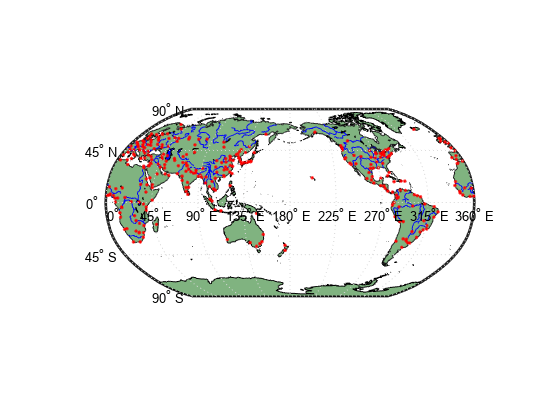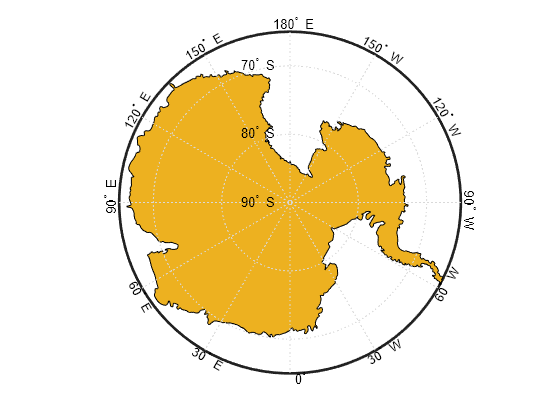worldmap
Create axesm-based map for world region
Description
worldmap or
regionworldmap( sets up an empty
region)axesm-based map (previously referred to as map axes)
with projection and limits suitable to the part of the world specified in
region.
worldmap with no arguments presents a menu from which you
can select the name of a single continent, country, island, or region.
h = worldmap(___)axesm-based map.
Examples
Input Arguments
Output Arguments
Tips
All axes created with
worldmapare initialized with a spherical Earth model having a radius of 6,371,000 meters.worldmapusestightmapto adjust the axes limits around the map. If you change the projection, or just want more white space around the map frame, usetightmapagain orauto axis.
Version History
Introduced before R2006a






